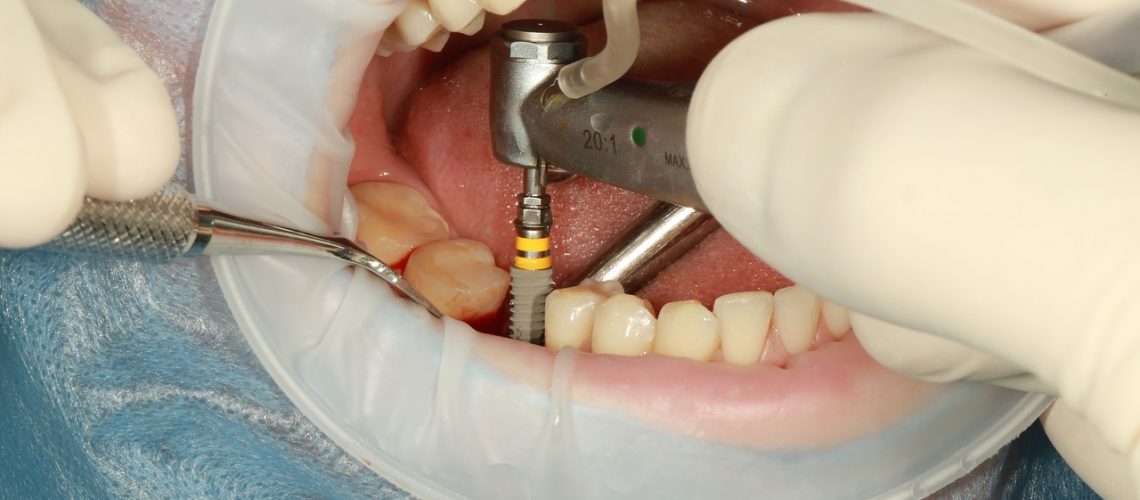Little Known Facts About Dental Sense.
Table of ContentsThe Main Principles Of Dental Sense Things about Dental SenseNot known Factual Statements About Dental Sense How Dental Sense can Save You Time, Stress, and Money.
are clinical tools surgically implanted into the jaw to bring back an individual's capacity to eat or their look. They give assistance for fabricated (phony) teeth, such as crowns, bridges, or dentures. When a tooth is lost because of injury or illness, a person can experience difficulties such as rapid bone loss, defective speech, or adjustments to eating patterns that lead to discomfort.Dental implant systems include an oral implant body and oral implant abutment and might additionally consist of an abutment fixation screw. Dental implant vs bridge. The dental implant body is operatively placed in the jawbone instead of the tooth's origin. The dental implant joint is generally affixed to the implant body by the joint fixation screw and expands via periodontals into the mouth to support the attached synthetic teeth
(https://filesharingtalk.com/members/608667-dentalsense1)Structure of The Dental Implant System selecting dental implants, speak to your oral company concerning the possible advantages and threats, and whether you are a prospect for the procedure. Things to consider: Your total health and wellness is an essential consider figuring out whether you are a great candidate for dental implants, the length of time it will take to recover, and how much time the dental implant may stay in place.
Smoking may influence the recovery procedure and lower the lasting success of the implant. The recovery process for the implant body might take a number of months or longer, throughout which time you commonly have a short-lived joint in location of the tooth. the oral implant procedure: Carefully follow the dental health directions provided to you by your oral supplier.
Fascination About Dental Sense
Implant failing can result in the requirement for one more procedure to take care of or change the implant system. Brings back the capacity to chew Recovers aesthetic appearance Aids keep the jawbone from diminishing as a result of bone loss Preserves the health and wellness of the surrounding bone and periodontals Helps maintain surrounding (close-by) teeth stable Enhances lifestyle Damages to surrounding all-natural teeth during implant placement Injury to the surrounding cells throughout surgical procedure, such as sinus perforation Injury throughout surgical treatment (for example, crack of bordering jawbone) Insufficient feature, such as seeming like the teeth do not attack together usually An experience that the tooth is loose or turning in position resulting from an abutment screw loosening up Implant body failing (looseness of the dental implant body) as a result of systemic infection, which may be much more most likely in people with unchecked diabetics issues as a result of regional infection in bone and periodontals supporting the dental implant body because of delayed recovery, which may be more probable in individuals that smoke Difficulty cleaning the periodontals around the implant, causing poor oral hygiene Untreated gum illness Post-surgical feeling numb due to nerve impingement or damage Constantly alert health care companies and imaging professionals that you have oral implants before any type of magnetic resonance imaging (MRI) or x-ray procedures.
FDA is not mindful of any kind of negative occasions reported for MRI or x-ray procedures with dental implants. Dental implants systems are generally made of products that adhere to global consensus standards of the International Company for Standardization (ISO) or ASTM International. These criteria have information of what makes a risk-free material.

A dental implant is a framework that replaces a missing out on tooth. With screw-like devices, the specialist inserts an implant into the jawbone, and it acts as an anchor for an artificial tooth, called a crown. A gadget called a joint attaches the synthetic tooth to the oral implant. The crown is customized to fit the individual's mouth and match the shade of their teeth.
4 Easy Facts About Dental Sense Described
Some people are not eligible for dental implant surgical procedure. It is for oral surgeons to operate individuals with: intense illnessuncontrollable metabolic diseasebone or soft cells condition or infectionIf these problems are settled, an individual can have the surgical procedure. In, oral specialists abstain from operating on people with: If people with any of the above go through dental implant surgery, there is a higher risk of the implant falling short.

Oral dental implant surgery is a personalized process. It's not the exact same for everyone. Yet the complying with offers a general introduction of what you can anticipate your dental professional, oral cosmetic surgeon, periodontist or prosthodontist to do: Place the dental implant operatively. Give you time to recover. Affix the message and final crown, bridge or denture.
Next, your cosmetic surgeon will very carefully put the dental implant into your jaw. Your surgeon will reposition your gum tissues and shut the incision with stitches. If your implant is near the front of your mouth, your dentist will make a temporary tooth for you to wear until you recover. In this way, you will not have a space in your smile while you recuperate.
10 Easy Facts About Dental Sense Shown
Your supplier can tell you what to anticipate in your circumstance. During the recovery stage, your jawbone must fuse to the dental implant. This procedure, called osseointegration, is essential for stability and lasting success. This procedure can take anywhere from three to nine months. Sometimes, it may take much longer.
When your dental implant heals, your dental professional can attach the abutment (small adapter post) and your final reconstruction (crown, bridge or denture). This usually takes regarding one hour to complete and may call for a second minor surgical treatment. You shouldn't really feel any pain throughout your dental implant procedure since your service provider will certainly make use of medication to numb your gums.